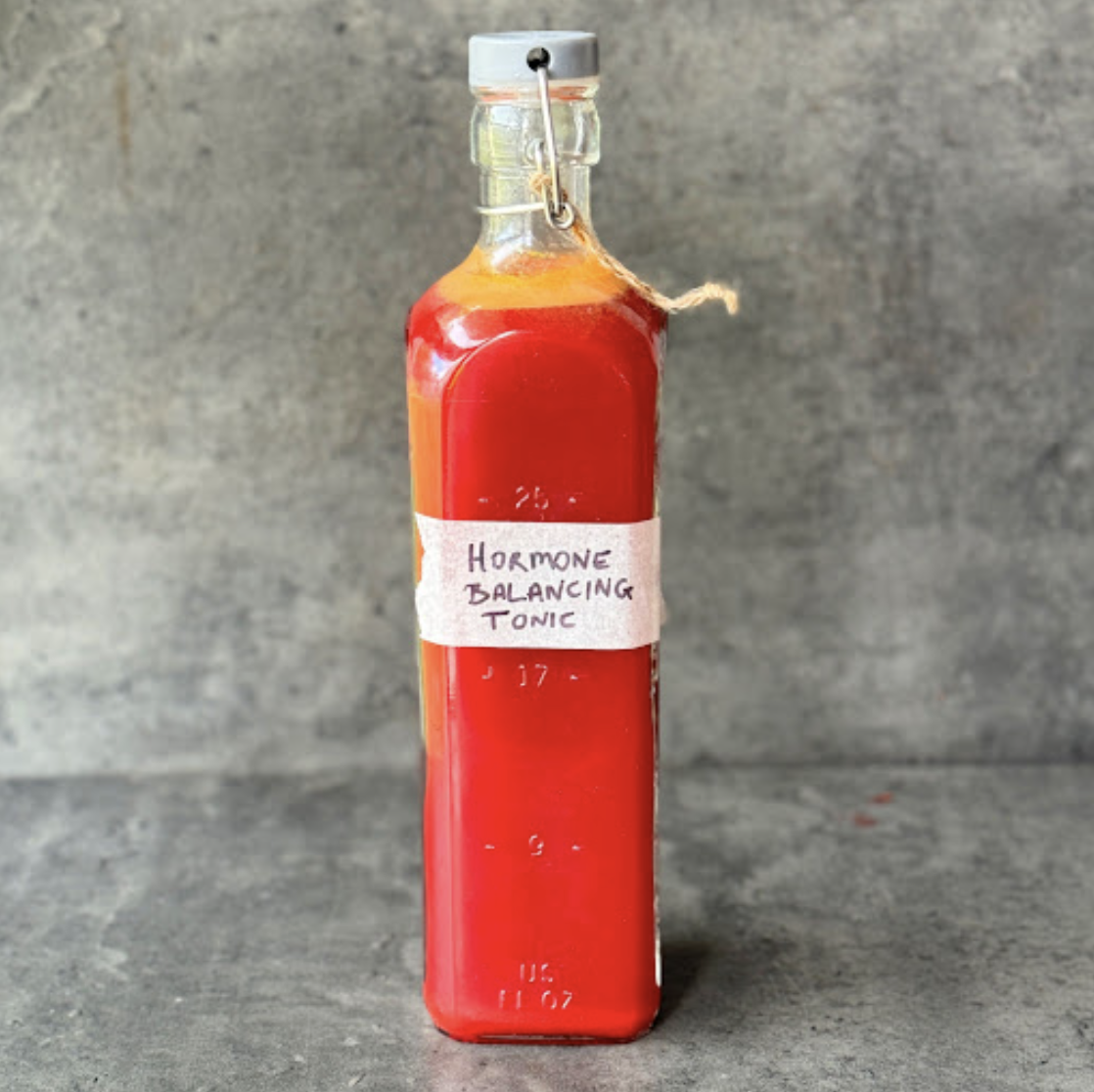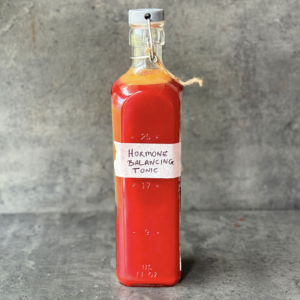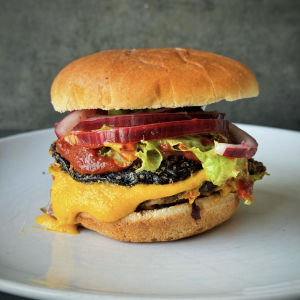

Fermented Hormone Balancing Tonic
Here we make our own kombucha and for secondary fermentation we add in freshly juiced veg that are associated with balancing hormones. This secondary ferment lasts for 2-3 days at room temperature and the result is a really beautiful kombucha that is packed with nutrients that can be great for balancing hormones. The sugars in kombucha are digested by the SCOBY which result in the proliferation of beneficial microbes for your gut health. Click here to check out their range. We use our favourite Nama J2 juicer which we adore, we have recently partnered with them, use the code: HAPPYPEAR10 to get a 10% discount!While this juice includes ingredients that support overall hormone health—such as carrots, which are high in beta-carotene that converts to vitamin A for hormone production and regulation, and beetroot, which is rich in magnesium and potassium essential for hormone synthesis and regulation—it is not a cure for any health issues. Achieving optimal hormone health also requires a balanced diet, regular exercise, adequate sleep, and a healthy lifestyle. If you are experiencing any health problems, always consult with a healthcare professional.
Takes 10 days 15 minutes
Serves
Ingredients
Kombucha
- 180 g caster sugar
- 6 rooibos tea bags
- 250 ml boiling water
- 2.5 L cold water
- 1 scoby symbiotic culture of bacteria and yeast
- 250 ml of kombucha
Juice for secondary fermentation
- 1 medium beet
- 3 carrots
- ½ lemon
- 15 g fresh ginger
- 8 g fresh turmeric
- 1 medium cucumber
- 1 apple
Instructions
- Make Kombucha: To make our kombucha, boil the kettle. Into a measuring jug or medium bowl add in the sugar, tea bags and the 250ml of boiling water. Leave to brew for 5 mins and stir to ensure the sugar has all dissolved and remove the tea bags. Into your fermentation vessel or jar add in 2.5L of water followed by the sugary just brewed tea. Next add in the SCOBY followed by the 250ml of unpasteurised kombucha. This kombucha will act as the starter culture that will help with correct fermentation.
- Get a SCOBY: A SCOBY is a Symbiotic Culture Of Bacteria and Yeast, resembling a jellyfish or a silicone disc. Obtain one either by purchasing online or from a friend who brews kombucha. With each batch you make, your SCOBY will grow, allowing you to share with friends or expand your brewing.
- Brew the Tea: Boil 250ml of water. In a large bowl, steep the tea bags and dissolve the sugar in the hot water, allowing the flavours to infuse for about 5 minutes. Discard the tea bags after use.
- Combine Ingredients: Add the remaining 2.5 litres of water to the 3L jar. Mix in the brewed sugary tea and the temperature should have cooled to below 37°C (body temperature) to avoid harming the SCOBY.
- Fermentation: Place the SCOBY and the 250ml of live kombucha into the jar. Cover with a tea towel and let it ferment for 7-12 days at room temperature, away from direct sunlight.
- Post-Fermentation: After the fermentation period, remove the SCOBY. Your kombucha is now ready for consumption. This is your first fermentation.
- Make juice for second fermentation: Freshly juice the beet, carrot, cucumber, apple, lemon, ginger and turmeric.
- Second Fermentation (for increased carbonation and flavouring):
- Transfer the kombucha into smaller jars or bottles and fill them ⅔ full with the fermented kombucha. Fill the remaining ⅓ with the fresh juice ensuring to leave approx 2-3 cm from the top empty for the build up of gases and for fermentation.
- Carbonation: Seal the jars and let them sit, you will have to “burp” them daily to release excess gas. Leave for 1-3 more days before drinking. Longer fermentation will increase carbonation.
Notes
Kombucha Q&A
How long should I ferment kombucha?
The ideal fermentation time is about 10-14 days at 20°C. Variables like SCOBY size and ambient temperature can affect this. Taste your kombucha to determine readiness—it should be bubbly and not overly sweet. The longer you ferment for, the more acidic it will become. Extended fermentation can lead to a more vinegar-like taste.
What should I use to ferment my kombucha?
Glass jars are best, but BPA-free plastic works too. Avoid metal containers and utensils, as they can damage the SCOBY.
Where can I get a SCOBY?
You can purchase them online or acquire one from a friend who brews kombucha. As you continue brewing, you’ll have extra SCOBYs to share.
How do I grow a SCOBY from scratch?
Begin with an unpasteurized store-bought kombucha. Brew a small cup of tea with 1 tbsp of sugar, matching the tea type in the kombucha. Once cooled below 37°C, combine with the kombucha in a jar, cover with a cloth, and ferment at room temperature out of direct sunlight for 2-4 weeks. A SCOBY should develop, becoming thicker over time. Use this SCOBY to start your first batch.
Why does kombucha require sugar?
Sugar is essential for fermentation, serving as food for the SCOBY. During the process, sugar is converted into probiotics and carbon dioxide, leaving minimal sugar in the final product.
What type of sugar is best for brewing kombucha?
White Sugar: Easiest for the SCOBY to consume.
Brown Sugar: May alter the flavour and is harder for the SCOBY to digest.
Honey: Can be used, but ensure it’s pasteurised to maintain SCOBY balance.
Agave Syrup: Best mixed with another sugar type to maintain culture health.
Remember, the sugar is primarily for the SCOBY, not for consumption. Properly fermented kombucha contains significantly less sugar compared to other sweetened drinks.








